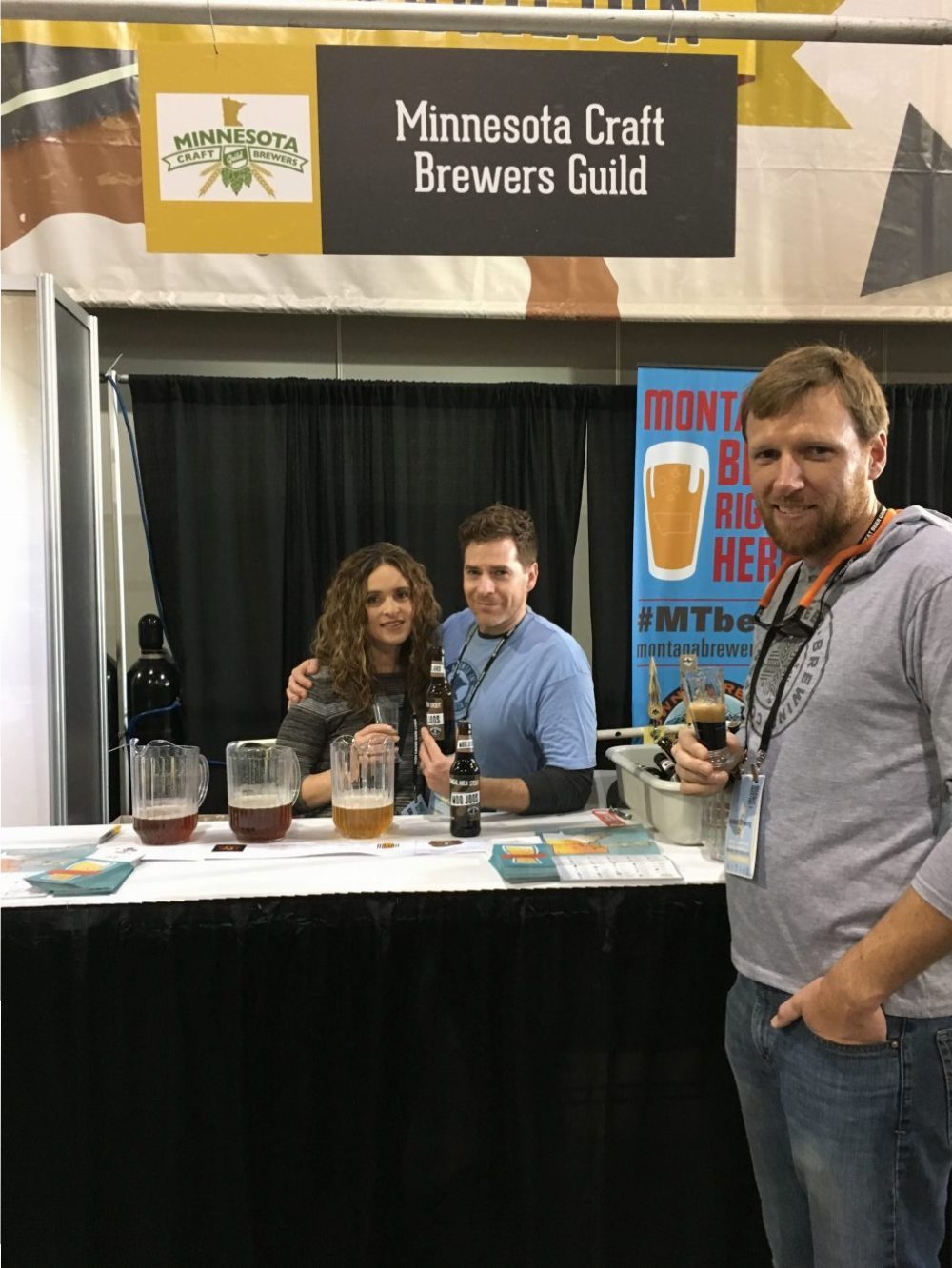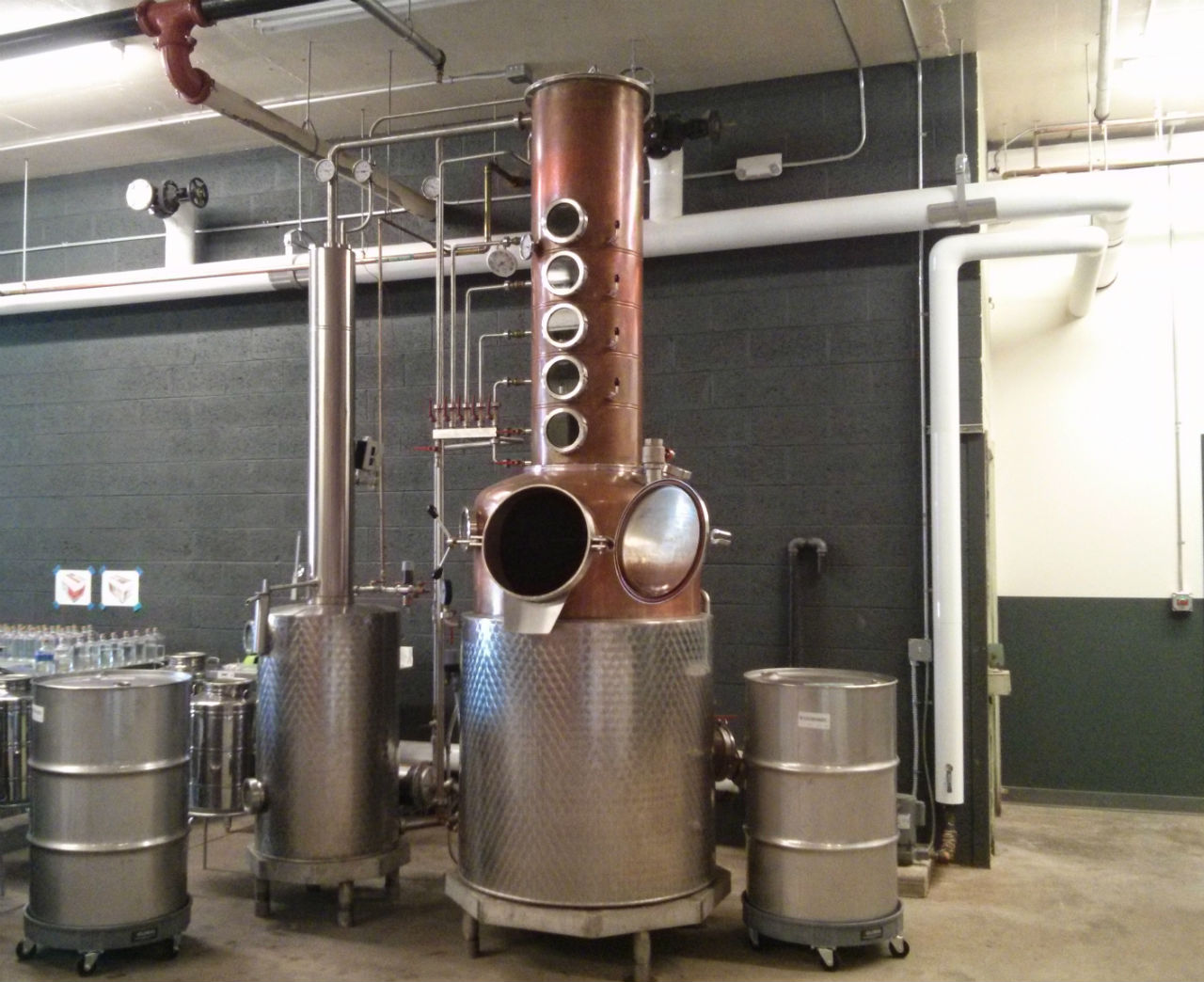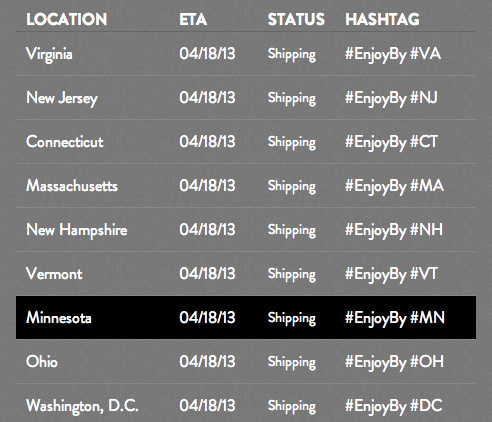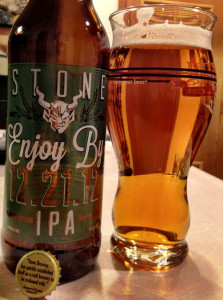By: Jeff O’Brien
Introduction
Recent law changes in Minnesota have paved the way for a microdistillery boom. Starting a distillery, however, can be a daunting task. Besides purchasing equipment and supplies, owners also have to navigate the myriad of legal issues in this heavily regulated industry. Without proper planning and advice, you may end up back at square one (or worse).
Here are ten key steps to start your own distillery business on a sound legal foundation:
Step #1: Choose a Name
Before any document is filed with a government office, you must determine if the desired name of your distillery is available. Nothing could be worse than paying additional fees to change a name that conflicts with an existing distillery, reprint letterhead and business cards, or dealing with a cease and desist demand from another distillery’s lawyer.
The easiest and cheapest way to clear your proposed name is to Google the proposed name. Also check your state Secretary of State’s website for similarly named business entities or assumed names, and the United States Patent and Trademark Office’s trademark database for similar trademarks. These databases are limited in scope and for additional expense you can perform a comprehensive search that will more conclusively show whether you can proceed with your selected distillery name (and brands of spirits).
Step #2: Form an Entity
Use of a business entity serves two primary purposes: (1) your personal assets are shielded from the liabilities of your new venture; and (2) where you have multiple owners, clear and unambiguous agreements amongst the owners as to who owns what, what rights each of the owners have, and what happens if an owner wishes to leave, help minimize later disputes.
Most business owners choose either the limited liability company and the Subchapter S corporation for their entity form. Use of LLCs or corporations can be a valuable planning and asset protection tool for business owners, and most attorneys can form these entities at reasonable fees in a short period of time.
Step #3: File a Trademark for Your Distillery Name
 A trademark is any individual or combination of words, phrases, symbols or designs that identifies or distinguishes the source of goods of one party from those of another. A service mark does for services what a trademark does for goods. Trademarks protect the goodwill that owners create to identify goods and services, not the goods and services themselves. Trademarks can also exist indefinitely (subject to ongoing use and renewal requirements).
A trademark is any individual or combination of words, phrases, symbols or designs that identifies or distinguishes the source of goods of one party from those of another. A service mark does for services what a trademark does for goods. Trademarks protect the goodwill that owners create to identify goods and services, not the goods and services themselves. Trademarks can also exist indefinitely (subject to ongoing use and renewal requirements).
The process of registering a trademark or service mark begins by filing an application with the U.S. Patent and Trademark Office (USPTO). The USPTO employs attorneys who will review the application for proper legal and procedural grounds. In many cases, the examining attorney responds to the application with an “office action.” The attorney highlights any conflicts with the proposed mark, or any other objections to granting registration in the office action. The applicant has the opportunity to respond to any conflicts or problems noted in the office action within six months. After six months, if the applicant does not respond, the application is deemed “dead.” If the application either receives no objections for registration, or if the applicant overcomes any objections within the six month period, the USPTO publishes the mark for opposition. Any party, who may contest the registration of the mark, must do so within 30 days of the publication date. If no one contests the mark, then the USPTO will register the mark, typically 12 weeks following the publication date. Once you select a mark, the overall USPTO process from start to finish averages between 12 and 18 months.
Careful trademark and service mark management can lead to a successful brand development and greatly increase the value of a company or product. However, use and registration of trademarks and service marks can be a complicated and treacherous landscape. The knowledge of an experienced attorney can help navigate the terrain of trademark law, and lead to an outcome of branding success.
Step #4: File Trademarks for Your Product Names
With new distilleries, wineries and breweries launching every day, the competition for product names is fierce. The Trademark Office treats all liquor names the same; i.e., if the proposed name of your gin is already registered for a wine, you should choose a different name and avoid the fight with the Trademark Office. Once you select the names and design logos, you need to file trademark for these as well (NOTE: if you have your product names selected at the time you apply for a Federal trademark for the distillery name, you can submit the applications for the product names at the same time – up to 36 months before the launch of the product itself).
Step #5: Lease a Space for Your Distillery
As the old cliché goes, in real estate it’s all about “location, location, location,” and this is especially true for a distillery business. If you’re looking to be the neighborhood hangout complete with a cocktail room, you’ll need to find a suitable space close to home. Should you have larger ambitions, you may seek a more strategic location amenable to later expansion. Whatever the case may be, you’ll need to have a space secured in order to complete the licensing process.
A new distillery owner will most likely lease a building at the start, and negotiating a suitable lease is a crucial step in the process.
Commercial lease agreements typically come in one of two varieties: “triple net” and “gross.”
In a triple net, the tenant pays rent to the landlord, as well as a pro rated share of taxes, insurance and maintenance expenses. In the typical triple net lease, the tenant pays a fixed amount of base rent each month as well as an “additional rent” payment which constitutes 1/12 of an estimated amount for taxes, insurance and maintenance expenses (also called CAM or common area maintenance expenses). At the end of the lease year, the estimated amounts are compared to actual expenses incurred and adjusted depending upon whether the tenant paid too much or too little through its monthly payments.
In a “gross” lease, the landlord agrees to pay all expenses which are normally associated with ownership. The tenant pays a fixed amount each month, and nothing more.
Step #6: Have Your Key Employees Sign Employment Agreements
Most employees in Minnesota and other states are “at will” employees; that is, they can leave their employment whenever they wish, for any reason or no reason. If a business owner has a key employee that is integral to its success, that employee should have a written employment agreement that provides for a fixed term of employment. A covenant not to compete can be included to deter a key employee from leaving to work for a competitor. Absent this type of agreement, the key employee can leave at any time.
A written employment agreement is imperative for those employees who know a distillery’s product formulas could do the most damage to the business working for the competition. Hence, an employment agreement for these key employees should include a covenant not to compete and provisions that clearly state that the product formulas are “trade secrets” and thus the property of the distillery.
Covenants not to compete must be narrowly tailored to balance the interests of employer and employee. The employer must show (i) the covenant not to compete was supported by consideration when it was signed (if the consideration for the covenant is the continued employment of the employee, then the covenant must be signed prior to the start of employment to be valid); (ii) the covenant protects a legitimate business interest of the employer; and (iii) the covenant is reasonable in duration and geographic scope to protect the employer without being unduly burdensome on the former employee’s right to earn a living.
Step #7: If You’re Raising Money, Comply with Federal and State Securities Laws
 Finding suitable financing for a startup venture such as a new distillery can be difficult. Perhaps that’s why many startup distillery operators are turning to private funding sources for their new venture.
Finding suitable financing for a startup venture such as a new distillery can be difficult. Perhaps that’s why many startup distillery operators are turning to private funding sources for their new venture.
When private funds are sought, federal and state securities laws must be complied with. The definition of a “security” is very broad and not limited to shares of stock. It includes partnership and LLC interests, promissory notes and many other financing instruments. Securities must either be registered or exempt from the registration requirements of state and federal laws. Certain written disclosures and information must be made or made available to investors so they can have the appropriate information to make an investment decisions. Whenever possible, focus on “accredited investors,” which are essentially those persons who have a million dollar net worth excluding their house or persons with annual gross income of $200,000 if an individual, or $300,000 for a married couple, with an expectation that it will continue. The disclosure requirements are the least for these sophisticated investors. However, even if you have an exemption from registration, liability for any fraud by the issuer still remains.
The consequences for not complying with federal and state securities laws are severe and can include administrative, civil and criminal penalties. Thus, before seeking private financing for your new distillery, be sure to consult with an attorney knowledgeable and qualified to handle securities matters.
Step #8: Apply for Your Distiller’s License with the TTB
Perhaps the most important – and most time consuming – step along the path to owning and operating your own distillery is the process by which you obtain a license for the distillery from the Alcohol and Tobacco Trade and Tax Bureau (“TTB”). TTB collects Federal excise taxes on alcohol, tobacco, firearms, and ammunition and assures compliance with Federal tobacco permitting and alcohol permitting, labeling, and marketing requirements to protect consumers.
If you intend to make distilled spirits for other than family or personal use, TTB must approve your operations, recipes, labels and the like. You have to apply for a distilled spirits manufacturer’s license and TTB must approve your operations before you begin to make products. TTB may initiate an on-site inspection of the proposed premises and operations prior to the issuance of your license. Background checks on directors, officers and significant owners are also required. This process typically takes three to four months to complete.
Step #9: Apply for Applicable State and Local Licenses
Besides TTB approval, a new distillery will need to apply for a state wholesaler’s license as well as any licenses required by the municipality in which the distillery will operate. An example of the latter is a taproom license. In Minnesota, if the distillery intends to construct and operate a cocktail room where patrons can purchase cocktails at the distillery, the cocktail room license must be issued through the municipality, not the State of Minnesota.
Step #10: Choose Distributors Carefully
Distribution is one of the most important, yet commonly overlooked components in the operation and success of a distillery. Unlike brewers, distillers do not have the option to self-distribute.
 Normally, each market will contain two to three major distributors, who do business with virtually all restaurants, bars and liquor stores. They have excellent contacts within the retail trade, including important chain store buyers. The disadvantage for the distiller is that most distributors manage huge portfolios of products, and your products may be just a blip on the radar. Of particular note, due to laws imposed in most states, it is often very difficult to terminate a distributor agreement. Once you enter an agreement with a distributor (whether or not written), these laws protect the distributor from suppliers terminating at will.
Normally, each market will contain two to three major distributors, who do business with virtually all restaurants, bars and liquor stores. They have excellent contacts within the retail trade, including important chain store buyers. The disadvantage for the distiller is that most distributors manage huge portfolios of products, and your products may be just a blip on the radar. Of particular note, due to laws imposed in most states, it is often very difficult to terminate a distributor agreement. Once you enter an agreement with a distributor (whether or not written), these laws protect the distributor from suppliers terminating at will.
When selecting a distributor, choose one that not only suits your needs now, but that will also be appropriate down the road. Before letting a distributor promote your spirits, obtain price sheets from each wholesaler so you know which distributors carry the various brands in the market. Talk to retailers to gain insight into which distributor they prefer dealing with. Ask questions about service, product knowledge, enthusiasm, etc., of the salespeople and which distributor understands and sells microdistilled spirits the best. Look around the retail accounts and festivals to find out which distributor seems have the more meaningful presence, and best shelf positioning for craft spirits. Talk with other distillers in that market to get their opinion from the supplier side. Once you have chosen a distributor willing to carry your products, be sure to have your attorney draft a written distribution agreement.
Conclusion
The ever-changing legal requirements for properly establishing a new distillery are numerous and complex and they can become a distraction from routine business operations if not handled properly. That’s why working with an attorney knowledgeable in these issues is essential as you can focus on developing delicious spirits and catering to customers, versus dealing with what seem to be a never-ending array of legal issues. Based on experience, if you integrate your lawyers into your distillery team early, you will hopefully avoid monster issues down the road.
Jeffrey C. O’Brien is an attorney and shareholder with the Minneapolis-based law firm Lommen Abdo, P.A., and Chair of the firm’s Food, Beverage and Leisure Activities Practice Group. He handles a wide variety of legal issues for several local microdistilleries. He can be reached at 612-336-9317 or via email at jobrien@lommen.com.







 A trademark is any individual or combination of words, phrases, symbols or designs that identifies or distinguishes the source of goods of one party from those of another. A service mark does for services what a trademark does for goods. Trademarks protect the goodwill that owners create to identify goods and services, not the goods and services themselves. Trademarks can also exist indefinitely (subject to ongoing use and renewal requirements).
A trademark is any individual or combination of words, phrases, symbols or designs that identifies or distinguishes the source of goods of one party from those of another. A service mark does for services what a trademark does for goods. Trademarks protect the goodwill that owners create to identify goods and services, not the goods and services themselves. Trademarks can also exist indefinitely (subject to ongoing use and renewal requirements). Finding suitable financing for a startup venture such as a new distillery can be difficult. Perhaps that’s why many startup distillery operators are turning to private funding sources for their new venture.
Finding suitable financing for a startup venture such as a new distillery can be difficult. Perhaps that’s why many startup distillery operators are turning to private funding sources for their new venture. Normally, each market will contain two to three major distributors, who do business with virtually all restaurants, bars and liquor stores. They have excellent contacts within the retail trade, including important chain store buyers. The disadvantage for the distiller is that most distributors manage huge portfolios of products, and your products may be just a blip on the radar. Of particular note, due to laws imposed in most states, it is often very difficult to terminate a distributor agreement. Once you enter an agreement with a distributor (whether or not written), these laws protect the distributor from suppliers terminating at will.
Normally, each market will contain two to three major distributors, who do business with virtually all restaurants, bars and liquor stores. They have excellent contacts within the retail trade, including important chain store buyers. The disadvantage for the distiller is that most distributors manage huge portfolios of products, and your products may be just a blip on the radar. Of particular note, due to laws imposed in most states, it is often very difficult to terminate a distributor agreement. Once you enter an agreement with a distributor (whether or not written), these laws protect the distributor from suppliers terminating at will.







